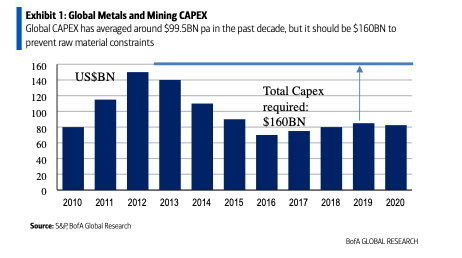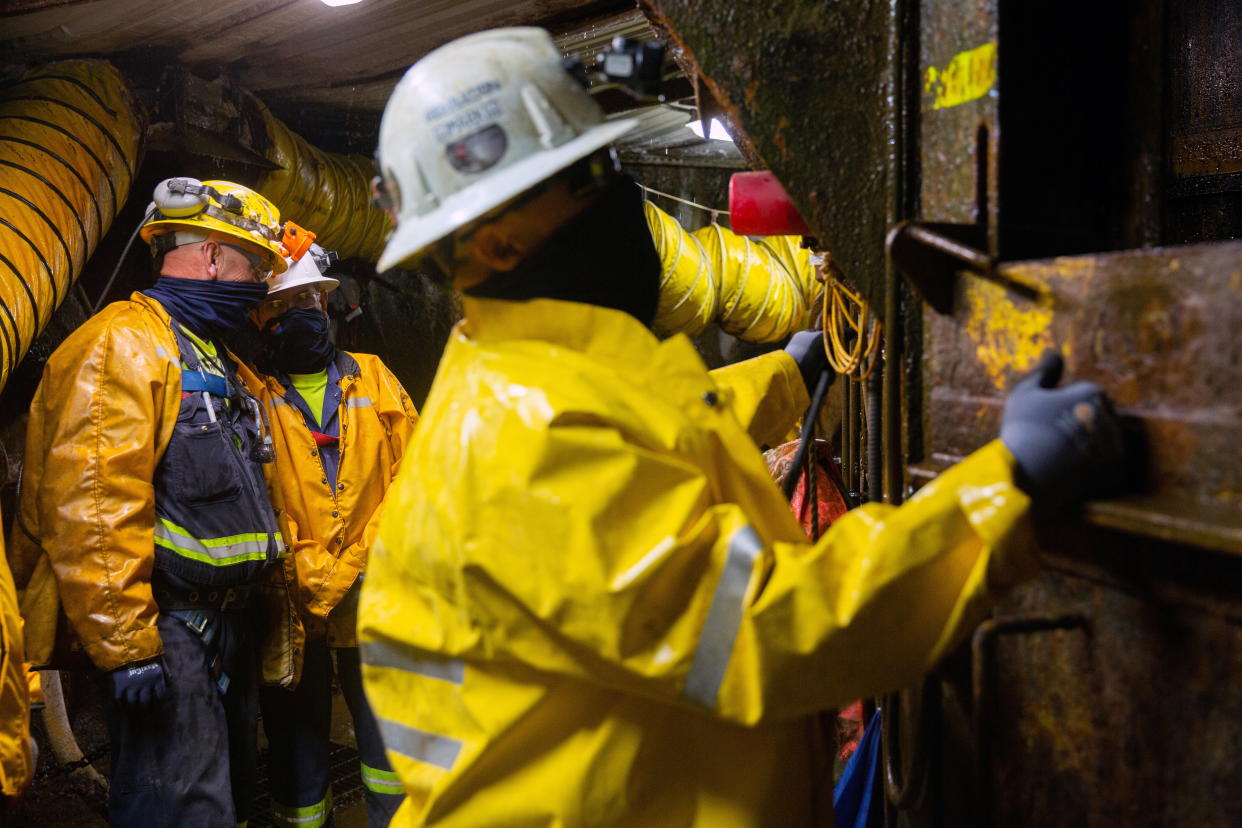Climate change: Investment in mining 'needs to nearly double' to achieve net zero, BofA says
Current levels of metals needed to decarbonize economies won't be sufficient to reach climate targets, a recent Bank of America (BAC) note cautioned, and investment in mining needs to double by 2050 in order to satisfy the growing demand for low carbon technologies.
"Raw material markets are tight already and will likely get tighter going forward," the analysts wrote. "Based on the current resource endowment and market balances, we don't expect the 1.5°C global warming target to be achieved by 2050: 1.7-1.8°C looks likely. One solution to resolving shortages and constraints, as ever, lies in investment."

The cost of shifting from fossil fuels to low carbon alternatives won't be cheap, the note stated, citing UN estimates that adoption will cost developing countries alone $140-$300 billion per year by 2030.
"To prevent metal shortages and achieve net zero, mining [capital expenditure] needs to nearly double," the analysts stated.
Due to the urgent nature of addressing the climate crisis, returns could be sizable. Using somewhat simplified calculations, the analysts suggested "the return on mining investment could be an impressive +94- 317%."
Metal supply 'putting net zero at risk'
While markets have tended to focus on copper and nickel, the note highlighted 27 different metals — aluminum, molybdenum, chromium, cobalt, manganese, silicon, steel, and more. — needed to be mined for green technologies.
These raw materials make up essential components for applications that range from renewable energy generation and storage to electric vehicles.

Although many of the technologies needed to achieve net-zero targets have been developed, scaling these technologies will require vast amounts of minerals and metals relative to current levels. Between 2020 and 2030, for instance, the analysts contend that nickel demand could grow by 40% while lithium demand could increase by 38%.
In other words, it appears that demand will outstrip supply unless mining capacity increases — and that supply-demand imbalance could impact how rapidly decarbonization occurs.
"Mined raw materials are key to the energy transition but a dearth of many metals important for future technologies (MIFTs) is putting net zero at risk," the analysts wrote. "The world is only slowly waking up to this threat. And China being the biggest producer of many critical resources exacerbates supply risk for the Western world.”
There are other options that could also help alleviate the supply crunch for these metals, the analysts added. These include battery innovation that uses more widely available raw materials, metal recycling, and nuclear power.
Despite whether or not nations and companies are able to innovate their way to greener solutions or whether they double down on extraction in order to facilitate that transition, something will need to be done to blunt rising temperatures. According to the World Meteorological Association, 2015-2021 were the seven warmest years on record.
"As such, decarbonization is not discretionary, but imperative, in our view," the analysts stated. "Beyond the debate on whether current net-zero targets are ambitious enough, we think the critical question to answer is 'What can we actually achieve?' with the current resource endowment."
Grace is an assistant editor for Yahoo Finance.
Read the latest news on the climate crisis from Yahoo Finance
Read the latest financial and business news from Yahoo Finance
Follow Yahoo Finance on Twitter, Instagram, YouTube, Facebook, Flipboard, and LinkedIn
